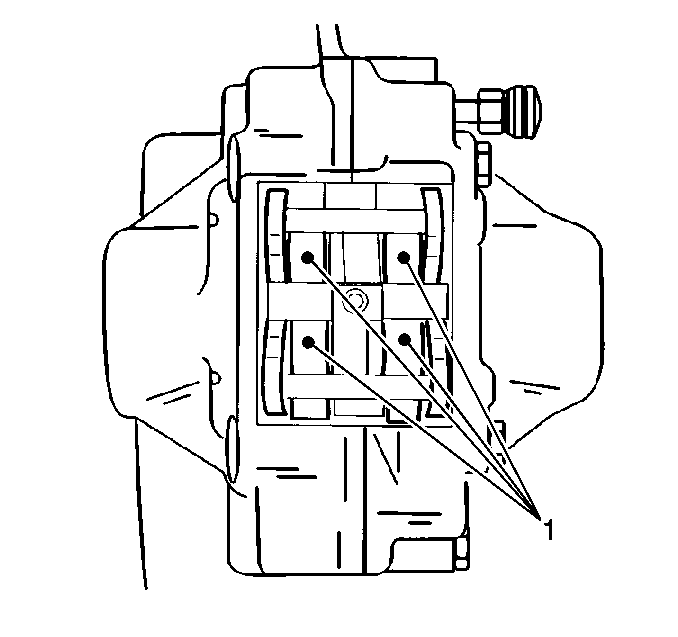Front
Inspect the inner and outer pads at least twice a year when the wheels
are removed (tire rotation, etc).
When inspecting the front brake linings on this vehicle note the following
important items:
| • | The inner and the outer pad lining ends are beveled slightly |
| • | The inner and the outer pad lining ends are not worn unevenly |
| | To check the thickness of the inner and the outer pad linings look through
the window in the top of the caliper. The pads should be replaced when the
thickness of either pad lining is worn to within 0.76 mm (0.030 in)
of the lining plate or rivets. A variation in lining thickness indicates
a caliper that is not sliding or self-adjusting. All brake pads should
be replaced in axle sets. |
The front disc brake system on this vehicle is equipped with an electronic
brake pad wear sensor. When the front brake linings wear to a degree where
replacement is required the indicator lamp on the instrument panel will
illuminate. The brake pad wear sensor is pressed into the inner brake
pad and connects to the vehicle wiring harness with a dual terminal
connector. The sensor consists of the following components:
| • | A ceramic L-shaped housing with an internal circuit loop |
| • | A steel retaining button |
| • | A two-wire harness connector |
| | When the front brake pad linings have worn to the point of replacement
the sensor makes contact with the brake rotor causing the plastic sensor housing
to erode. Eventually interrupting the circuit loop. The open circuit
causes the indicator lamp to illuminate. Once the indicator lamp has
illuminated the sensor is not reusable and must be replaced with the
replacement of the front brake pads. |
- Check the flatness of the brake pad linings.
- Place the inner and outer pad surfaces together.
- The inner and outer pads must be replaced if more than 0.15 mm
(0.006 in) gap is measured midway between the pads.
Rear

- Perform the following
rear disc brake pad inspection twice a year.
- Inspect the rear disc brake pad linings for taper or uneven wear.
- Look through the window in the top of the caliper to check the
comparative thickness of the pad linings (1). Ensure the pad linings have
even wear. An unevenly worn brake pad can indicate a piston or pistons
that are not retracting properly.
- Replace the brake pads when the thickness of any lining is worn
to within 0.76 mm (0.030 in) of the pad. Ensure to replace
all brake pads in axle sets only.
- Perform the following steps to measure the flatness of the brake
pad linings:
| 5.1. | Place the brake pad surfaces together. |
| 5.2. | Check for a gap between the surfaces. |
| 5.3. | Replace the brake pads if more than 0.13 mm (0.005 in)
gap is measured between the brake pads. |

